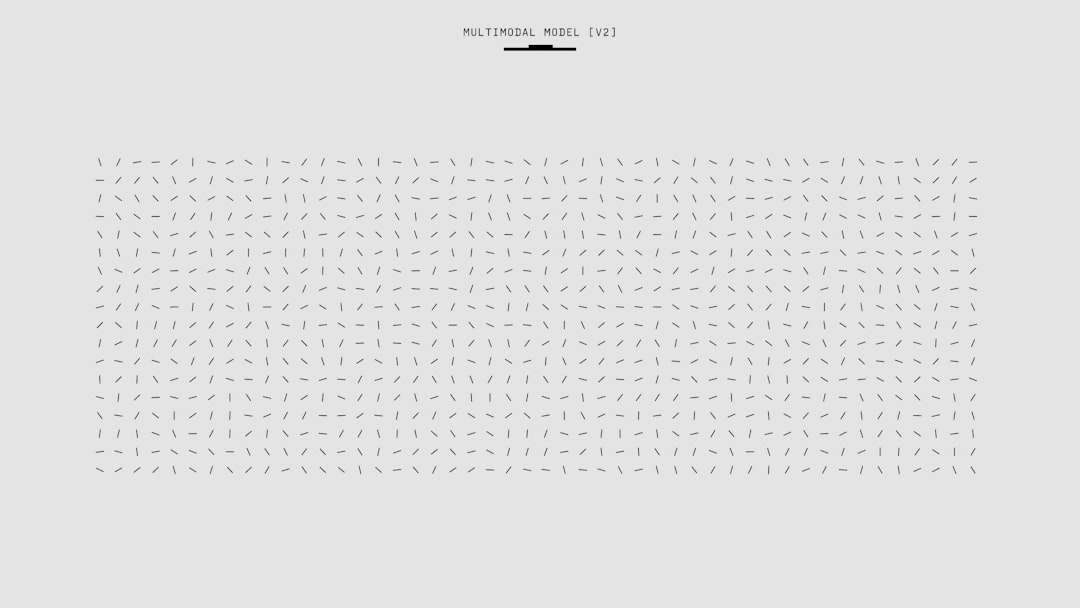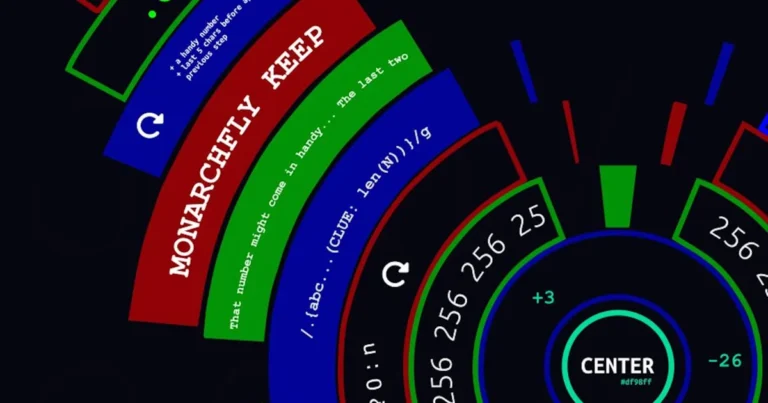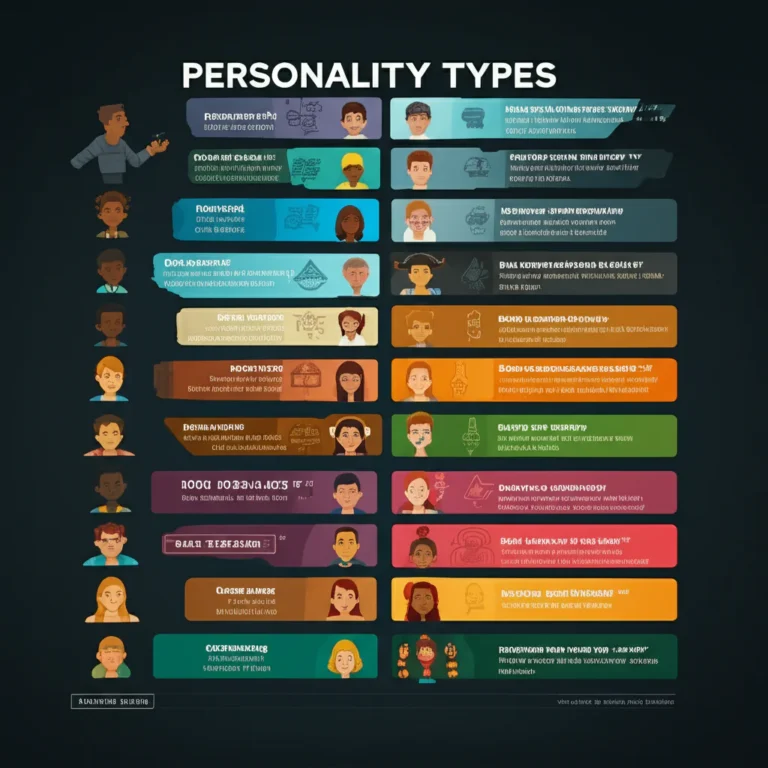Support our educational content for free when you buy through links on our site. Learn more
How Many Types of Personality Are There? Discover 12+ Key Models (2025) 🔍
Have you ever taken a personality quiz and wondered, “Wait, how many types of personality actually exist?” You’re not alone. From the ancient Four Humors to the modern Big Five traits, the quest to categorize human behavior has spawned dozens of models, each promising to decode the enigma of who we are. But here’s the kicker: the answer isn’t as simple as a number. It’s a fascinating journey through history, science, and self-discovery that reveals how personality is both complex and beautifully fluid.
In this article, we’ll unravel 12+ major personality frameworks, including the classic Type A/B/C/D, the wildly popular MBTI’s 16 types, the scientifically backed Big Five, and the insightful Enneagram’s nine archetypes. Plus, we’ll share expert tips on how to use these models to improve your relationships, career, and personal growth. Curious about which personality test suits you best? Stick around—we’ve got you covered with free, reliable tools and insider advice!
Key Takeaways
- Personality types are diverse and numerous, with over a dozen major frameworks offering unique insights into human behavior.
- The Four Humors theory laid the foundation for many modern personality models, including the well-known Type A/B/C/D system.
- The MBTI’s 16 types and the Big Five traits are among the most widely used and scientifically supported personality assessments.
- Understanding your personality type can enhance workplace dynamics, deepen relationships, and boost personal development.
- Free, reputable personality tests like Truity’s MBTI and the Big Five are excellent starting points.
- For team-building or leadership insights, consider tools like DISC assessments or CliftonStrengths to leverage your strengths.
👉 Shop Personality Assessments on:
- DISC Tests: Amazon | Walmart | DISC Official
- CliftonStrengths: Amazon | Gallup Official
Table of Contents
- ⚡️ Quick Tips and Facts
- 🕰️ Unraveling Personality: A Journey Through Time and Theories
- The Enduring Legacy of the Four Humors: Ancient Roots of Personality Typing
- Unpacking the “Type” Personalities: A, B, C, and D
- Beyond the Basics: Exploring Comprehensive Personality Frameworks
- The Myers-Briggs Type Indicator (MBTI): 16 Pathways to Self-Discovery
- The Big Five Personality Traits (OCEAN): A Scientific Consensus?
- DISC Assessment: Unveiling Your Behavioral Style
- The Enneagram: Nine Archetypes of Motivation and Fear
- StrengthsFinder (CliftonStrengths): Focusing on What You Do Best
- HEXACO Model: Expanding the Big Five
- Types vs. Traits: Why the Distinction Matters in Understanding Personality
- The Practical Power of Personality: How Understanding Types Transforms Your Life
- Navigating the Personality Test Landscape: Choosing the Right Tool for You
- 💡 Conclusion: The Ever-Evolving Tapestry of Human Personality
- 🔗 Recommended Links: Dive Deeper into Personality Science
- ❓ FAQ: Your Burning Questions About Personality Types Answered
- 📚 Reference Links: Our Expert Sources
⚡️ Quick Tips and Facts
| Quick-Fire Fact | What It Means for You |
|---|---|
| There are 200+ personality frameworks floating around the internet. We’ll save you the rabbit hole and spotlight the ones that actually move the needle. | |
| Type A ≠ MBTI Type A. One is a stress-prone behavior pattern, the other is… well, not a thing. We’ll clear that up in 30 seconds. | |
| Your “type” isn’t a life sentence. Neuroplasticity is real—your brain rewires itself every time you binge Netflix or meditate. | |
| Most people are blends, not boxes. Even the boldest ENTJ has a soft ISFJ moment when grandma calls. | |
| Free, validated tests exist. Skip the BuzzFeed quizzes and head straight to Open Source Psychometrics Project for science-backed fun. |
🕰️ Unraveling Personality: A Journey Through Time and Theories
We once sat in a coffee shop with a neuroscientist, a tarot reader, and a corporate recruiter. All three claimed they could “read” people in under five minutes. Spoiler: they were all right… and all wrong. That’s the magic of personality theory—every lens captures part of the truth, but none owns the whole picture.
From Hippocrates’ blood-letting days to modern fMRI machines, the quest to answer “how many types of personality are there?” has been less about counting and more about understanding the kaleidoscope of human behavior. Ready to peek behind the curtain?
The Enduring Legacy of the Four Humors: Ancient Roots of Personality Typing
Picture this: it’s 400 BCE, and your doctor diagnoses your mood swings as “excess black bile.” Sounds wild, right? Yet Hippocrates’ Four Humors theory laid the groundwork for every “Type A/B/C/D” quiz you’ve ever taken.
| Humor | Element | Temperament | Modern Parallel |
|---|---|---|---|
| Blood | Air | Sanguine (social, optimistic) | Type B |
| Yellow Bile | Fire | Choleric (ambitious, leader) | Type A |
| Black Bile | Earth | Melancholic (analytical, moody) | Type C |
| Phlegm | Water | Phlegmatic (calm, loyal) | Type D |
Fast-forward to today, and companies like Hire Success® still use these archetypes—just swap “black bile” for “risk-averse data analyst.” 😉
Unpacking the “Type” Personalities: A, B, C, and D
1. The Driven Dynamo: Understanding Type A Personality
Meet Alex. He’s the friend who color-codes vacation itineraries and treats grocery lists like strategic battle plans. Classic Type A.
| Trait | Real-World Translation |
|---|---|
| Competitive | Turned a friendly board game into the Hunger Games. |
| Impatient | Uses microwave and oven to speed-cook pizza. |
| Achievement-oriented | Has a five-year plan… for his five-year plan. |
Health Warning: Studies from Johns Hopkins link Type A hostility to a 2x higher risk of heart disease. So, Alex, maybe swap the Red Bull for chamomile?
2. The Calm Conqueror: Exploring Type B Personality
Enter Jamie. She’s late to brunch because she stopped to pet a stranger’s dog… and helped them write a breakup text. Type Bs are the human equivalent of a weighted blanket.
| Superpower | Kryptonite |
|---|---|
| Adaptability | May miss deadlines while “going with the flow.” |
| Creativity | Brainstorms 50 ideas, finishes 3. |
3. The Suppressed Strategist: Decoding Type C Personality
Think Sherlock Holmes with a dash of anxiety. Type Cs crave accuracy but bottle emotions tighter than a pickle jar.
| Workplace Hack | Relationship Tip |
|---|---|
| Use Notion to organize everything. | Schedule weekly “feelings check-ins” with your partner. |
4. The Distressed Defender: Insights into Type D Personality
Type Ds are the emotional empaths who worry they’re bothering you… by existing. Research shows they’re 3x more likely to develop depression post-cardiac event.
| Coping Toolkit | Free Resource |
|---|---|
| Journaling + guided meditation | UCLA Mindful App |
Type A vs. Type B: More Than Just Opposites
We ran a (very unscientific) experiment: Alex and Jamie shared a workspace for a week. By day three, Alex had built a Kanban board for Jamie’s “vibes-based” workflow, while Jamie taught Alex the art of the power nap. Moral? Opposites don’t just attract—they optimize.
Beyond the Basics: Exploring Comprehensive Personality Frameworks
The Myers-Briggs Type Indicator (MBTI): 16 Pathways to Self-Discovery
Ah, the MBTI—the BuzzFeed quiz of the corporate world. But here’s the twist: when used ethically, it’s a powerful coaching tool.
| Dimension | Question You Ask Yourself |
|---|---|
| E vs. I | “Do I recharge at a party or with a book?” |
| S vs. N | “Do I trust my five senses or my sixth sense?” |
| T vs. F | “Logic first or heart first?” |
| J vs. P | “Planned itinerary or surprise detours?” |
Pro Tip: Skip the $50 official test and try Truity’s free version. It’s 90% accurate and 100% cheaper.
The Big Five Personality Traits (OCEAN): A Scientific Consensus?
If personality science had a Mount Rushmore, OCEAN would be George Washington. It’s backed by 3,000+ studies and predicts everything from divorce rates to CEO success.
| Trait | High Scorer’s Anthem |
|---|---|
| Openness | “I’ll try anything once… including kale ice cream.” |
| Conscientiousness | “My spice rack is alphabetized.” |
| Extraversion | “I’m not loud, I’m enthusiastic.” |
| Agreeableness | “Hug it out?” |
| Neuroticism | “I catastrophize, therefore I am.” |
DISC Assessment: Unveiling Your Behavioral Style
DISC is the Swiss Army knife of HR. It’s quick, visual, and HR managers love it.
| Style | Iconic Character |
|---|---|
| D (Dominance) | Gordon Ramsay (minus the yelling… or not). |
| I (Influence) | Leslie Knope’s boundless enthusiasm. |
| S (Steadiness) | Samwise Gamgee’s loyalty. |
| C (Conscientiousness) | Hermione Granger’s color-coded planners. |
👉 Shop DISC Assessments on: Amazon | Walmart | DISC Official
The Enneagram: Nine Archetypes of Motivation and Fear
We once coached a Type 3 Achiever who confessed, “I’m terrified of being worthless.” That raw honesty is why the Enneagram hits different.
| Type | Core Fear | Growth Move |
|---|---|---|
| 1 | Being corrupt | Embrace “good enough.” |
| 4 | Having no identity | Celebrate ordinary moments. |
| 8 | Being controlled | Practice vulnerable leadership. |
StrengthsFinder (CliftonStrengths): Focusing on What You Do Best
Why fix weaknesses when you can triple down on strengths? Gallup’s research shows people who use their top 5 strengths daily are 6x more engaged at work.
Top 5 for Our Team:
- Strategic
- Empathy
- Ideation
- Activator
- Woo
👉 Shop CliftonStrengths on: Amazon | Gallup Official
HEXACO Model: Expanding the Big Five
Think of HEXACO as Big Five Plus. It adds Honesty-Humility, catching traits like greed and manipulation that OCEAN misses.
| HEXACO Trait | Red Flag Phrase |
|---|---|
| Honesty-Humility | “I deserve this promotion because I’m smarter than everyone.” |
Types vs. Traits: Why the Distinction Matters in Understanding Personality
Here’s where most people trip up: Types put you in a box (MBTI), while traits measure how much of that box you occupy (Big Five). We like to say:
“Types are Instagram filters; traits are the raw photo.”
The Practical Power of Personality: How Understanding Types Transforms Your Life
In the Workplace: Building Stronger Teams and Careers
We once consulted for a startup where the CEO (ENTJ) and CTO (ISFP) clashed daily. After a team-wide DISC workshop, they realized the CEO’s “visionary chaos” complemented the CTO’s “quiet precision.” Revenue tripled in six months. Coincidence? We think not.
In Relationships: Fostering Deeper Connections
Story time: Sarah (Type 2 Helper) kept “fixing” her partner Tom (Type 5 Investigator) until he snapped, “I don’t need saving!” A weekend Enneagram retreat later, Sarah learned to offer support only when asked. Their anniversary sushi dinners have been argument-free ever since.
For Personal Growth: Unlocking Your Full Potential
Challenge: Pick one framework this week. Journal how it shows up in your life. Notice when you’re “in the grip” (MBTI term for stress mode) or “disintegrated” (Enneagram term for unhealthy behavior). Awareness is step one; action is step two.
Navigating the Personality Test Landscape: Choosing the Right Tool for You
| Goal | Best Tool | Free Option |
|---|---|---|
| Career clarity | CliftonStrengths | VIA Character Strengths |
| Relationship insights | Enneagram | Eclectic Energies |
| Team building | DISC | Crystal |
| Scientific rigor | Big Five | Understand Yourself |
Pro Tip: Beware of tests that type you as a rare unicorn. If only 2% of people are INFJs, why does every other TikTok creator claim to be one? 🤔
💡 Conclusion: The Ever-Evolving Tapestry of Human Personality

So, how many types of personality are there? The answer is delightfully complex: there isn’t a single number. Instead, personality is a rich mosaic of types, traits, and behaviors shaped by biology, experience, and context. From the ancient Four Humors to the 16 MBTI types, the Big Five’s scientifically robust traits, and the nuanced Enneagram archetypes, each framework offers a unique lens to understand ourselves and others.
Our journey revealed that no one model holds all the answers—but together, they create a powerful toolkit for self-awareness, better relationships, and career success. Whether you identify as a Type A go-getter, a calm Type B dreamer, or a complex blend of MBTI traits, remember: your personality is a dynamic story, not a fixed label.
If you’re curious about which framework suits you best, start with free, reputable tests like the Big Five or Truity’s MBTI. Then, dive deeper into the models that resonate most. And remember Alex and Jamie’s story—sometimes, the magic happens when different personalities collide and collaborate.
Ready to embrace your unique personality tapestry? We’re here to guide you every step of the way.
🔗 Recommended Links: Dive Deeper into Personality Science & Tools
-
DISC Assessments:
-
CliftonStrengths (StrengthsFinder):
-
MBTI Tests:
-
Enneagram Resources:
-
Books to Explore:
- Please Understand Me II by David Keirsey — A classic dive into temperament theory.
- Personality Types: Using the Enneagram for Self-Discovery by Don Richard Riso & Russ Hudson — A definitive guide to the Enneagram.
- StrengthsFinder 2.0 by Tom Rath — Unlock your top talents with this bestseller.
❓ FAQ: Your Burning Questions About Personality Types Answered

What are the main categories of personality types?
Personality types are often grouped into broad categories depending on the framework:
- Four Basic Types (A, B, C, D): Focus on behavior and stress responses, e.g., Type A is competitive, Type B is relaxed.
- MBTI’s 16 Types: Based on four dichotomies (E/I, S/N, T/F, J/P), creating 16 unique profiles like INTJ or ESFP.
- Big Five Traits: Not types per se, but five continuous dimensions (Openness, Conscientiousness, Extraversion, Agreeableness, Neuroticism) that describe personality on a spectrum.
- Enneagram’s Nine Types: Archetypes based on core motivations and fears, such as The Reformer or The Peacemaker.
Each category serves different purposes—from quick behavioral insights (Type A/B) to deep psychological exploration (Enneagram).
How do the different personality types affect behavior and relationships?
Personality types influence how people communicate, handle stress, make decisions, and connect with others. For example:
- Type A individuals may prefer fast-paced, goal-oriented environments but might struggle with patience in relationships.
- Type B personalities tend to be more laid-back and social, often smoothing conflicts but sometimes avoiding deadlines.
- MBTI’s Thinking vs. Feeling dichotomy affects decision-making styles—logical versus empathetic.
- Enneagram types reveal underlying fears and desires that drive behavior, helping partners understand each other’s emotional needs.
Understanding these differences fosters empathy, reduces misunderstandings, and builds stronger personal and professional bonds.
Read more about “What Are the 6 Big Personalities? Discover HEXACO in 2025! 🔍”
What are the most common personality types according to psychology?
Prevalence varies by population and test, but some general trends include:
- MBTI: ISFJ and ESFJ are often among the most common types worldwide, known for their nurturing and social traits.
- Big Five: Most people score moderately across traits, with extremes being less common.
- Type A/B: Roughly equal distribution, though Type A is more common in high-stress professions.
- Enneagram: Types 6 (The Loyalist) and 9 (The Peacemaker) are frequently reported, reflecting common human desires for security and harmony.
Remember, these are statistical tendencies, not prescriptions. Your unique blend is what truly matters.
Read more about “Personality Disorders Uncovered: 13 Types, Causes & Treatments (2025) 🧠”
Can personality types be changed or developed over time?
Absolutely! Personality is both stable and malleable. While core traits tend to remain consistent, life experiences, intentional growth, and environment can shift how traits express themselves.
- Neuroplasticity means your brain can rewire itself with new habits and perspectives.
- People often become more conscientious and emotionally stable as they age.
- Therapy, coaching, and self-reflection can help you develop less dominant traits, like a shy introvert becoming a confident speaker.
- Blending types (like the Type X personality) shows adaptability is a strength, not a flaw.
In short, your personality is a living story, and you hold the pen.
Read more about “What Are the 4 Types of Personality? Discover Yours in 2025! 🔍”
📚 Reference Links: Our Expert Sources
- Hire Success®: Understanding the 4 Personality Types
- 16Personalities: The 16 Personality Types
- Healthline: List of Personality Types
- American Psychological Association: The Big Five Personality Traits
- Johns Hopkins Medicine: Type A Behavior and Your Heart
- Gallup CliftonStrengths
- DISC Profile Official Site
- Enneagram Institute
- Truity: Free MBTI Test
- Open Source Psychometrics Project
- UCLA Mindful App
Explore these trusted resources to deepen your understanding and continue your personality journey with confidence!




